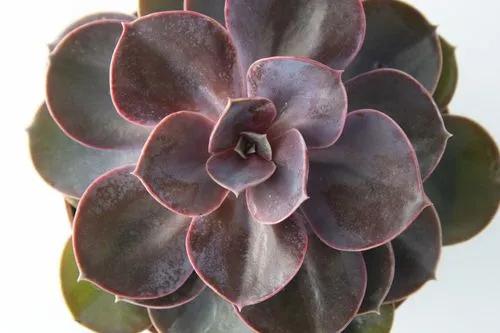Aeonium haworthii, also known as Haworth's aeonium or pinwheel, is a species of succulent flowering plant in the family Crassulaceae. It is grown as a houseplant in temperate regions.
Haworths aeonium Care
Aeonium haworthii
Other names: Haworth's Aeonium, Pinwheel, Aeonium Pinwheel



Aeonium haworthii is a member of the family Crassulaceae. You may also hear the plant referred by the common names Pinwheel Plant, Aeonium Pinwheel and Haworth’s Aeonium. It is a winter growing succulent perennial in the genus Aeonium hailing from Tenerife in the Canary Islands and North Africa. Pinwheel Aeonium has a freely branching growth habit and can range in height from between 6″ to 12″ inches tall with a spread of 18″ to 24″ inches. Leaves grow in rosettes 3″ to 4″ inches wide. The succulent leaves are blue-green and may have a slight red tinge along the margins. Blossoms are white, off-white or pale yellow and appear late in the springtime or early in the summer. White blooms may have a slightly pink tinge. The rosette which produces the flowers will die back after bloom time is complete.
How to Care for the Plant

Water

Keep the soil slightly moist, but don't allow it to become soggy as this may cause root rot.

Pruning

It is important because damaged leaves and stems can actually be an energy drain on your plant. By removing those dead parts, you're taking some of that work off your plant’s plate and allowing it to divert its energy into healthy leaves and new growth!

Fertilizer

Use a 5-10-10 blend or 10-10-10 fertilizer diluted to 1/4th strength.

Sunlight

Needs bright, indirect sunlight.

Soil

Does best in conventional potting soils that contain ingredients such as peat, manure, and black hummus.

Temperature

They grow best when the temperature is between 65° and 75°F. Outside, in some areas, frost may cause the plants to die back. However, as long as the roots do not freeze they will re-grow again when warm weather returns.

Container

Ceramic pots are the most popular type of containers for houseplants today. You'll find them in all kinds of styles, colors, and sizes. At one time, the clay pot was the most common container for indoor plants. When choosing a pot, choose a pot that is 2.5-5 cm (1-2”) larger than the current size.

Popularity

18,608 people already have this plant 2,871 people have added this plant to their wishlists
Discover more plants with the list below
Popular articles






